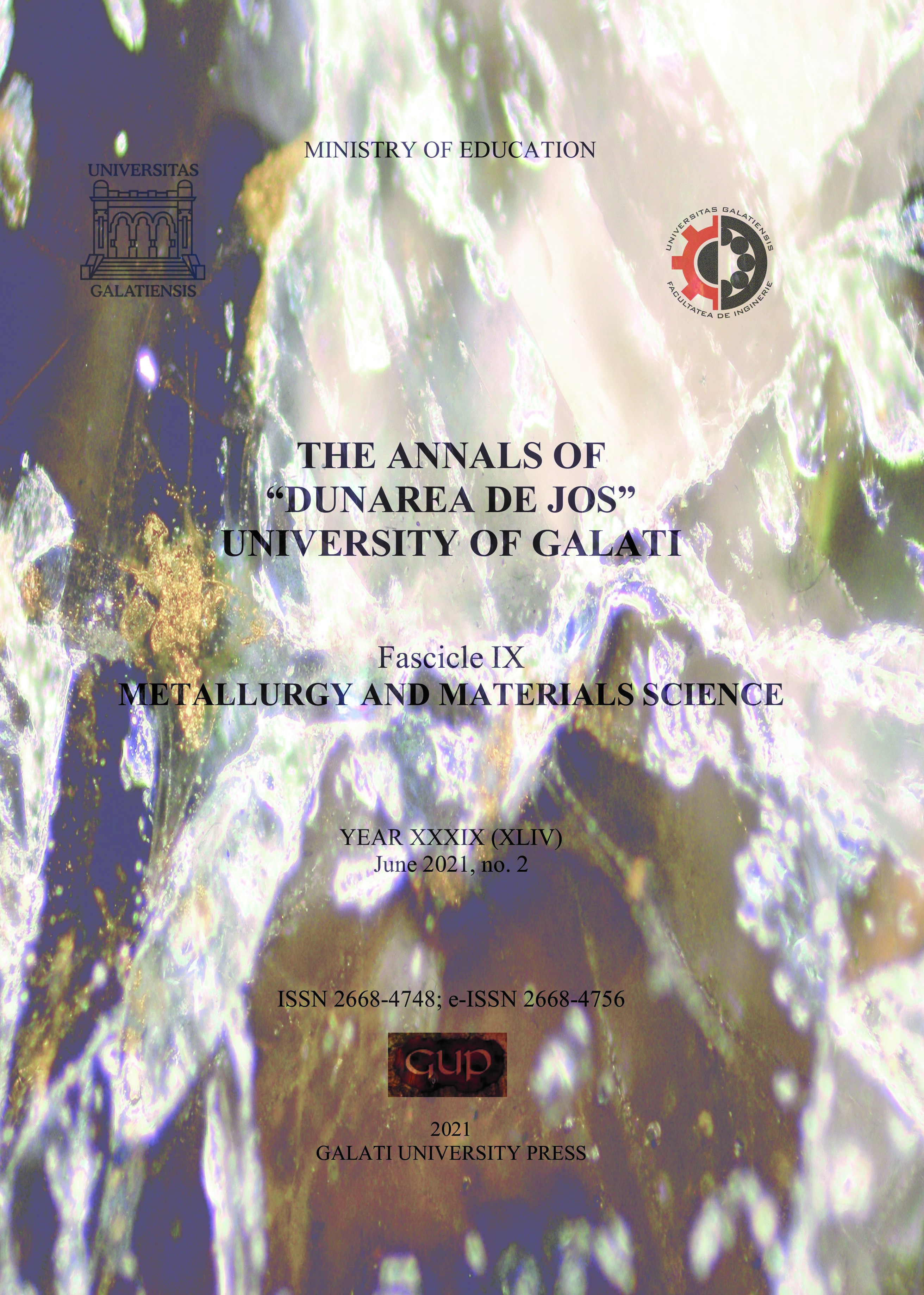Corrosion Behavior of Materials Al5083 Alloy, 316L Stainless Steel and A681 Carbon Steel in Seawater
Abstract
In this paper the corrosion behavior of different materials has been evaluated based on exposure in seawater. The laboratory immersion test technique has been applied to evaluate the effect of seawater on the corrosion behavior of different materials. In three sets of experiments, carbon steels (A681 Type O7), austenitic stainless steels (316L) and aluminium alloys (Al5083) were utilized. The specimens were fixed fully submerged in seawater. The corrosion process was evaluated using weight loss method, open-circuit potential measurements (OCP) and polarization techniques. To determine gravimetric index and the rate of penetration, samples were immersed in corrosive environment for 89 days and weighed periodically. The electrochemical experiments were conducted with a Potentiostat/Galvanostat (PGP 201) analyzer. It was connected to a PC. The Voltamaster software was used for electrochemical data analysis. A three-electrode cell composed of a specimen as a working electrode, Pt as counter electrode, and saturated calomel electrode (SCE) (Hg (l)/ Hg2Cl2 (s)) as a reference electrode were used for the tests. The weight loss tests revealed the lowest corrosion rate values for stainless steel and aluminium alloys, indicating a beneficial use for these materials in marine environments. The potentiodynamic method shows that the lowest corrosion rate in seawater (2.8 μm /year) was obtained for the Al5083 alloy, and the highest value of the corrosion rate (41.67 μm/year) for A681 carbon steel.
Downloads
References
[2]. Féron D., Corrosion Behaviour and Protection of Copper and Aluminium Alloys in Seawater, Imprint Woodhead Publishing, ISBN 978-1-84569-241-4, 2017.
[3]. Abdolreza Mostafanejad, Mehdi Iranmanesh, Arman Zarebidaki, An experimental study on stress corrosion behavior of A131/A and A131/AH32 low carbon steels in simulated seawater, Ocean Engineering, vol. 188, 106204, 15 September 2019.
[4]. Xiang Wang, Robert E. Melchers, Corrosion of carbon steel in presence of mixed deposits under stagnant seawater conditions, Journal of Loss Prevention in the Process Industries, vol. 45, Pages 29-42, January 2017.
[5]. Takumi Kosaba, Izumi Muto, Yu Sugawara, Effect of anodizing on galvanic corrosion resistance of Al coupled to Fe or type 430 stainless steel in diluted synthetic seawater, Corrosion Science, vol. 179, 109145, February 2021.
[6]. Yuanyuan Shen, Yaohua Dong, Yi Yang, Qinghong Li, Hongling Zhu, Wenting Zhang, Lihua Dong, Yansheng Yin, Study of pitting corrosion inhibition effect on aluminium alloy in seawater by biomineralized film, Bioelectrochemistry, vol. 132, 107408, April 2020.
[7]. Hosni Ezuber, El-Houd A., El-Shawesh F., A study on the corrosion behavior of aluminium alloys in seawater, Materials & Design, vol. 29, iss. 4, Pages 801-805, 2008.
[8]. Horațiu Vermeșan, Coroziune și protecție anticorozivă, Editura Risoprint, Cluj-Napoca, 2005.
[9]. Shiqiang Chen, Dun Zhang, Corrosion behavior of Q235 carbon steel in air-saturated seawater containing Thalassospira sp., Corrosion Science, vol. 148, p. 71-82, 2019.
[10]. Baoping Cai, Yonghong Liu, Xiaojie Tian, Fei Wang, Hang Li, Renjie Ji, An experimental study of crevice corrosion behaviour of 316L stainless steel in artificial seawater, Corrosion Science, vol. 52, iss. 10, p. 3235-3242, October 2010.
[11]. Kemal Nişancioĝlu, Corrosion Behaviour and Protection of Copper and Aluminium Alloys in Seawater, European Federation of Corrosion (EFC) Series, p. 145-155, 2007.
[12]. Jeenat Aslam, Ruby Aslam, Salhah Hamed Alrefaee, Mohammad Mobin, Afroz Aslam, Mehtab Parveen, Chaudhery Mustansar Hussain, Gravimetric, electrochemical, and morphological studies of an isoxazole derivative as corrosion inhibitor for mild steel in 1M HCl, Arabian Journal of Chemistry, vol. 13, iss. 11, p. 7744-7758, November 2020.
[13]. Kuangtsan Chiang, Todd Mintz, Gravimetric techniques, Techniques for Corrosion Monitoring (Second Edition), Woodhead Publishing Series in Metals and Surface Engineering, p. 239-254, 2021.
[14]. Teodora Badea, Mihai V. Popa, Maria Nicola, Știința și ingineria coroziunii, Editura Academiei Române, ISBN 973-27-0856-5, București, 2002.
[15]. Loto C. A., Fayomi O. S. I., Loto R. T., Popoola A. P. I., Potentiodynamic Polarization and Gravimetric Evaluation of Corrosion of Copper in 2M H2SO4 and its inhibition with Ammonium Dichromate, Procedia Manufacturing, vol. 35, p. 413-418, 2019.
[16]. Wei Wang, Peter E. Jenkins, Zhiyong Ren, Electrochemical corrosion of carbon steel exposed to biodiesel/simulated seawater mixture, Corrosion Science, vol. 57, p. 215-219, April 2012.
[17]. Xin S. S., Li M. C., Electrochemical corrosion characteristics of type 316L stainless steel in hot concentrated seawater, Corrosion Science, vol. 81, p. 96-101, April 2014.



